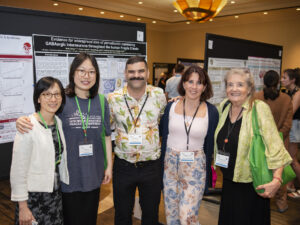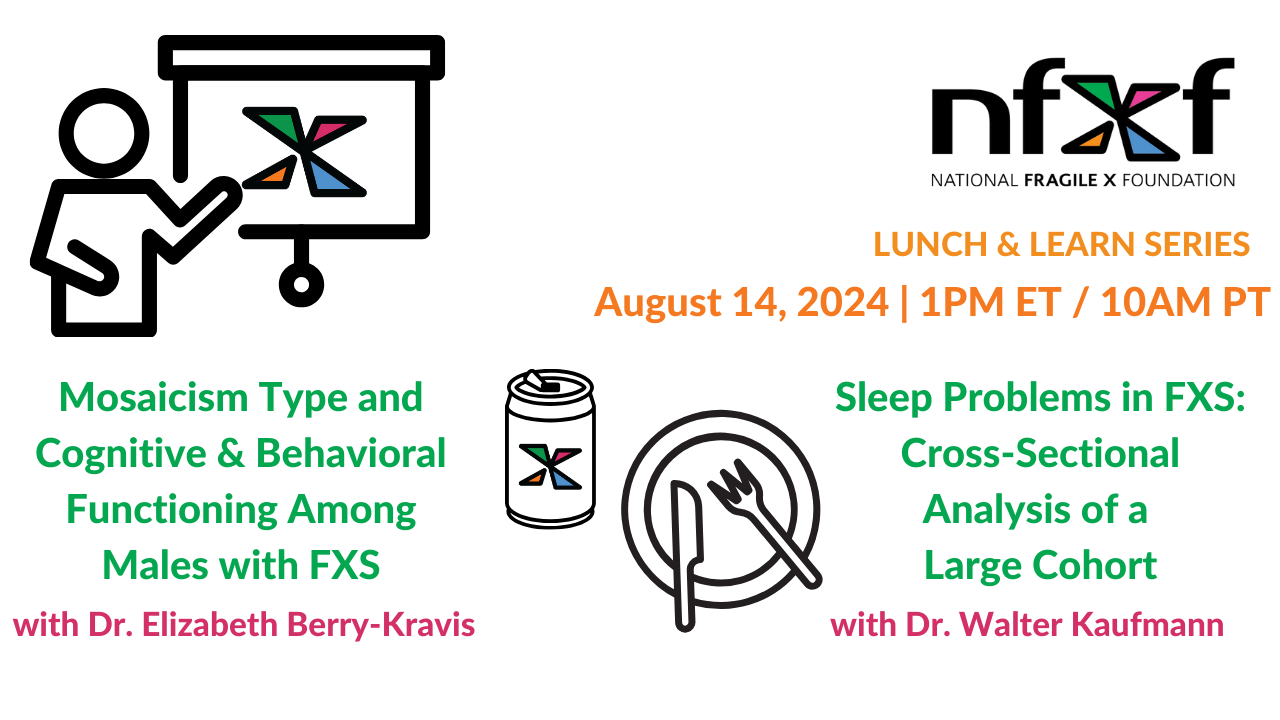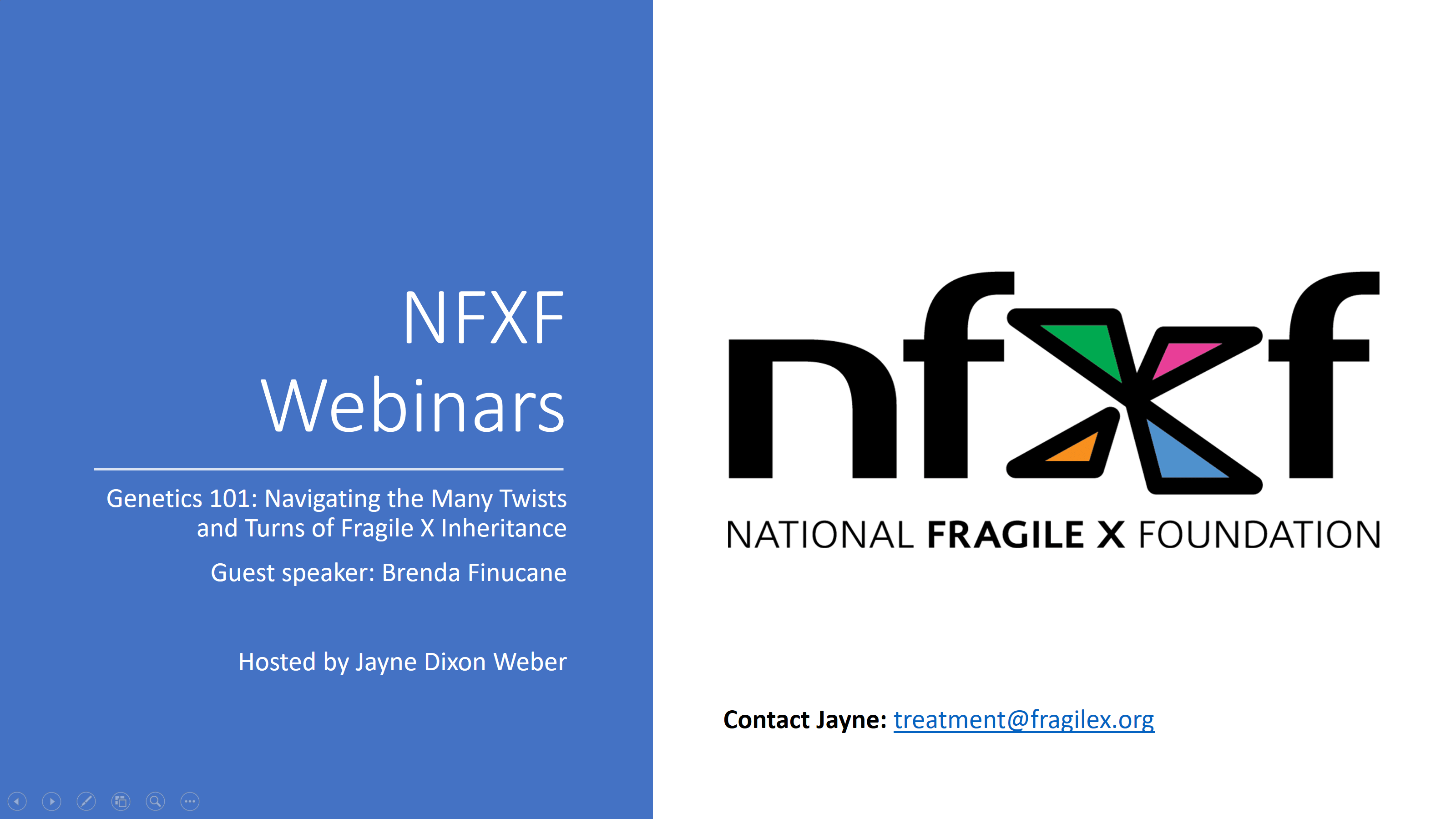Introduction
FXS is a genetic condition that can cause learning disabilities, developmental delays, and social and behavioral issues. Significant anxiety is also very common. Although FXS occurs in both genders, males are more frequently and typically more severely affected than females. FXS is the most common cause of inherited intellectual and developmental disability and the most common, known single-gene cause of autism spectrum disorder (ASD).
FXS is caused by a DNA expansion in the FMR1 gene, which is located on the X chromosome. The FMR1 gene includes a repeated DNA code commonly referred to as “CGG repeats,” as it is composed of DNA elements called cytosine-guanine-guanine (CGG). Most everyone has the FMR1 gene as well as these CGG repeats.
Typically there are up to 45 CGG repeats, with people in the general population commonly having around 30 CGG repeats. Some people have a small expansion in the gene, with a range of 45–54 CGG repeats, which is also known as an “intermediate” or “gray zone” expansion. Individuals with larger expansions may have a premutation (55–200 CGG repeats) or a full mutation (more than 200 CGG repeats). Most people with FMR1 full mutations show symptoms of FXS.
When the FMR1 gene has >200 CGG repeats (full mutation), a process called methylation occurs that turns the gene off so it cannot make its protein product, FMRP, and thus results in decreased or absent FMRP; it is FMRP that is needed for typical brain development and functioning. Symptoms of FXS are typically caused by the absence of FMRP due to complete methylation of the FMR1 gene when there is a full mutation present.
Mosaicism
Mosaicism is a term describing two or more genetic results in the same individual and mosaicism may result in variability in symptoms. In Fragile X syndrome, there are two types of mosaicism:
- Size Mosaicism: The most common type of mosaicism in Fragile X syndrome, indicating one or more different CGG repeat numbers in the same individual, such that some CGG repeats are in the normal or premutation range and others CGG repeats are in the full mutation range.
- Methylation Mosaicism: This indicates a pattern where some cells have a methylated FMR1 gene, which is therefore turned off (no FMRP being produced) while other cells in the same individual have an unmethylated FMR1 gene, which is still able to make FMRP. This pattern may also be called partially methylated when present.
Size Mosaicism
Because of the instability of the CGG repeat when passed down from one generation to the next generation, an individual can have both cells that have CGG repeats in the typical, intermediate, or premutation range, while the remaining cells have CGG repeats in the full mutation range. This situation is termed size mosaicism. Since FMRP is typically produced when there is a typical, intermediate, or premutation CGG repeat size, FMRP levels in individuals with size mosaicism may be higher than in individuals with only a full mutation CGG repeat. Size mosaicism may contribute to variable symptoms in these individuals.
Methylation Mosaicism
The process of FMR1 silencing through gene methylation may not occur equally in all cells. This situation is the basis for a second type of FMR1 mosaicism — methylation mosaicism — in which those with the full mutation may produce FMRP in a variable proportion of cells.
Both size mosaicism and methylation mosaicism can be present, but regardless of mosaicism status, individuals with an FMR1 full mutation will almost always show a reduction in typical FMRP level, with wide variability in symptoms.
Also see: Size and Methylation Mosaicism in Males with Fragile X Syndrome
— Expert Review of Molecular Diagnostics
Does My Child Have Mosaicism?
For Fragile X, there can be mosaicism for different sizes of CGG repeats or different levels of methylation. Most testing laboratories are able to detect significant mosaicism as part of Fragile X DNA testing but will only note it on the lab report when present. If a lab report makes no mention of it, then the lab most likely did not find mosaicism. In any case, it’s important that you review your child’s Fragile X lab report with a genetic counselor or other qualified healthcare professionals who can best interpret the meaning of the results and confirm what type of testing was completed.
Genetic Counseling and Family Support
Genetic counseling includes family and medical histories to assess the chance of carriers (premutations) throughout a family’s lineage.
Outcomes
As a group, people with mosaicism tend to be higher functioning with fewer symptoms. However, this cannot be predicted on an individual basis. The degree of size or methylation mosaicism detected in blood does not necessarily reflect the pattern of mosaicism in the brain or other body tissues.
A recent report from our multi-year, multi-clinic, CDC-funded FORWARD study showed that methylation mosaicism is associated with better cognitive functioning and adaptive behavior (less significant developmental delay) and less social impairment relative to the fully methylated full mutation. In contrast, the presence of size mosaicism was not significantly associated with better cognitive and behavioral outcomes than full mutation.
More research needs to be done, but knowing more about how FXS differs in people with and without size and methylation mosaicism may eventually help guide expectations and treatment of individuals with FXS. For now, the general education and therapy recommendations made for individuals with a full mutation of FXS apply to those with mosaicism, but consideration should be given to the specific needs and functioning of the individual.
LEARN MORE
Related Webinars
view allFebruary 8, 2018
01 h 15 m
Brenda Finucane, MS, LGC, associate director and professor at Geisinger ADMI, explains mosaicism, plus answers some burning genetics questions from the Fragile X community.
May 22, 2017
01 h 17 m
Whether you’re a newly diagnosed family in the Fragile X community or have been living with the diagnosis for several years, please join us as we speak with Geisinger professor Brenda Finucane about the nuts and bolts of Fragile X inheritance.





